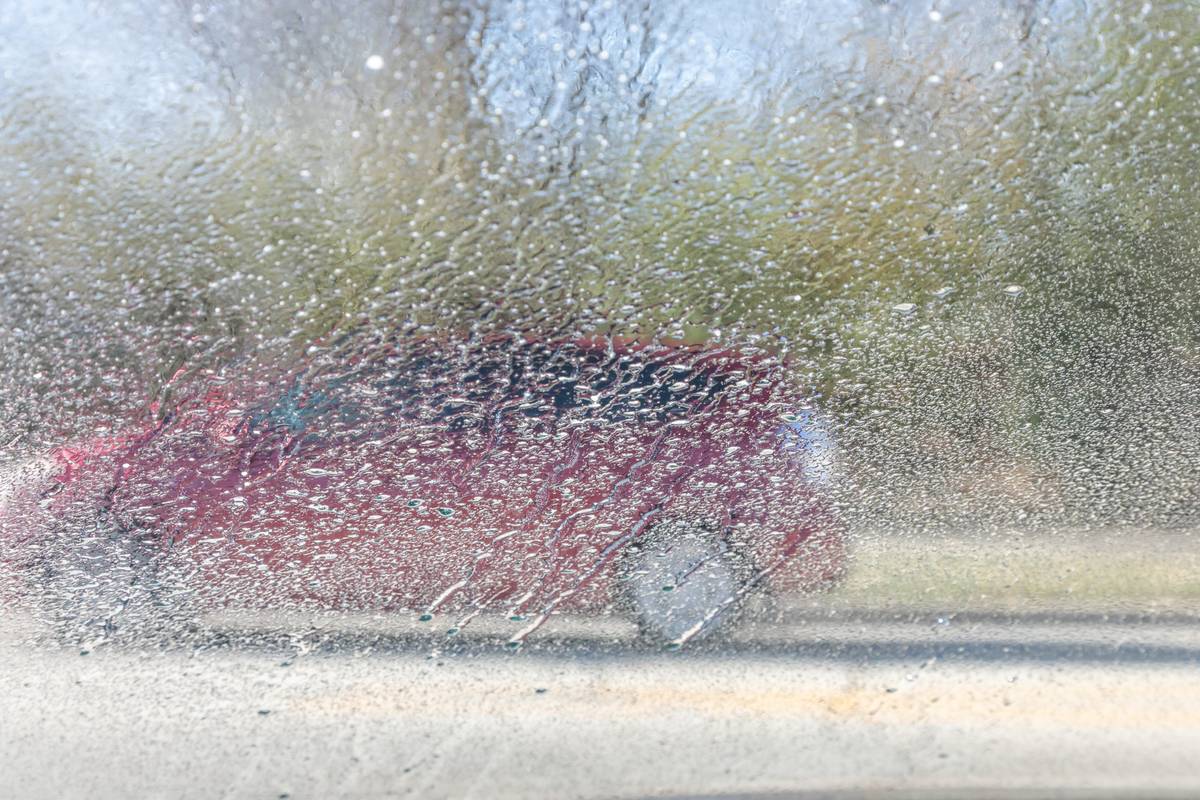Why Do Only Some of My Car's Windows Get Condensation on Them?

It usually happens on a morning when you’re already behind schedule: As you approach your car, you can see that the windows are covered with frost or condensation, and you have to spend time — almost always time you don’t have — clearing it off to drive safely. No one enjoys clearing frost or condensation on cold mornings, but turning on the heat often takes a while to solve the problem. Unfortunately, driving with foggy windows isn’t an option.
Related: Why Do My Car’s Windows Fog Up?
In another of life’s mysteries, at times only some of a car’s outside windows may have frost or condensation, not all. What’s up with that? Why does moisture sometimes only seem to settle on certain spots while others remain clear?
Having condensation on some of your windows while others remain clear is a common — though frustrating — problem. It can make driving dangerous and throw your day off schedule. What causes this inconvenience, though?
What Causes Some Car Windows to Fog Up?
If you’ve guessed that the air temperature is part of the issue, you’re right. The temperature of the air outside and even inside your vehicle plays a major role in the development of condensation.
The main cause of condensation is a difference between the temperature of the air and the temperature of the glass. Condensation on the outside of a car is caused when warm, moist air (often present in early morning hours) condenses when it hits the car’s colder window glass. During cold weather, turning the heat off inside your car may also cause moisture to build up on your windshield or windows. That’s also why on warm, humid days, condensation may form at the base of the windshield, where outside air encounters cooled air from the car’s air conditioner. Generally speaking, when warm air meets cold air, moisture develops on surfaces. When the surface is a window, it fogs up.
Mats Selen, a University of Illinois physics professor, explained that when warm, moist air cools, it eventually gets to a temperature at which it can no longer support all the water and starts to condense. That’s the dew point, or the point at which moisture begins to settle on cold surfaces.
“When relative humidity is 100 percent, it means that if the temperature goes down any more, then the water has to come out somewhere,” Selen said. “On a cool morning, when there’s dew [or fog] on the ground, that’s because you have warm, moist air that comes in contact with the cool ground” — the same goes for condensation on a car that’s been sitting outside.
When it’s cold enough, the condensation turns to frost.
But, why would only some car windows get condensation? Selen suggested that wind could be a factor, but another theory focuses on whether the windows are vertical (like side windows) or at an angle (like a windshield or the rear window on some cars). It’s possible that slanted surfaces are more likely to collect condensation because they provide a more horizontal landing spot.

Those who park their vehicles outside are basically at the mercy of Mother Nature: Temperature, humidity, dew point and the combination of all three may lead to condensation on your car windows. According to Selen, one way to possibly reduce the amount of moisture that collects on your windows is to coat them with a water-repellent substance such as Rain-X or Aquapel, both of which cause water to bead and roll off the glass. A car defroster can also help quickly clear the car’s windshield and rear window by activating the air conditioning automatically.
More From Cars.com:
- Should You Warm Up Your Car in Winter?
- How to Safely Remove Snow and Ice From Your Car
- Why Do My Tires Lose Pressure in Cold Weather?
- Tips for Starting Your Car in Subzero Weather
- More Winter Driving Tips and Safety Advice
Related Video:
Cars.com’s Editorial department is your source for automotive news and reviews. In line with Cars.com’s long-standing ethics policy, editors and reviewers don’t accept gifts or free trips from automakers. The Editorial department is independent of Cars.com’s advertising, sales and sponsored content departments.
Featured stories

15-Year Car Loans Aren’t a Thing, But Americans Are Getting More Comfortable With Long Loan Terms

2025 Kia Telluride Review: Rougher Roads Ahead



